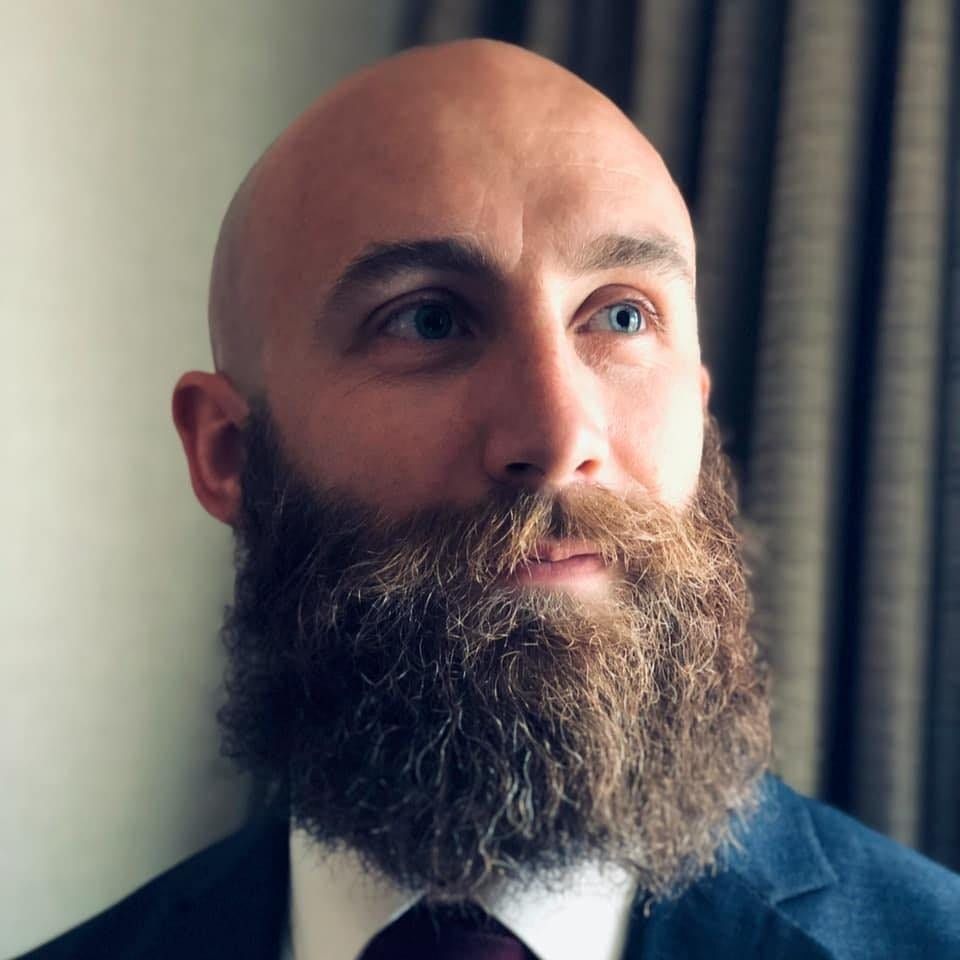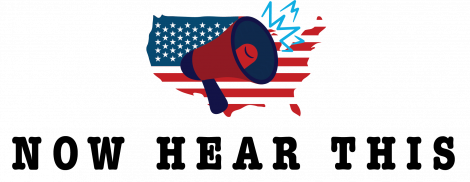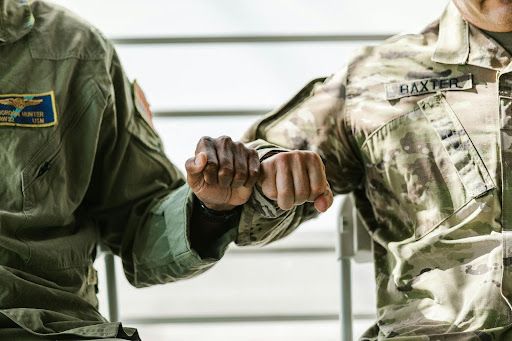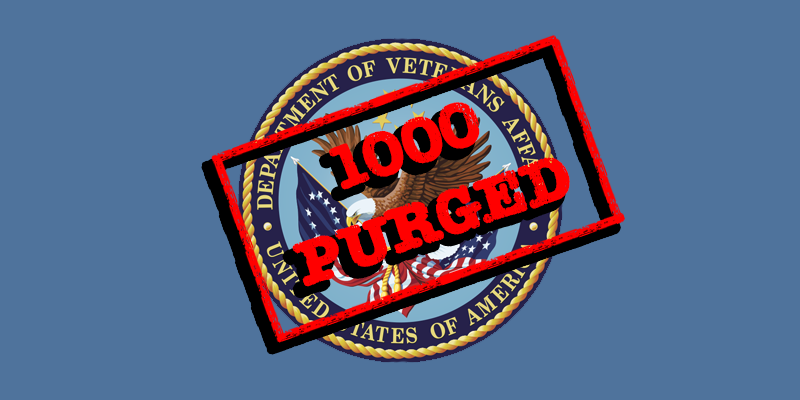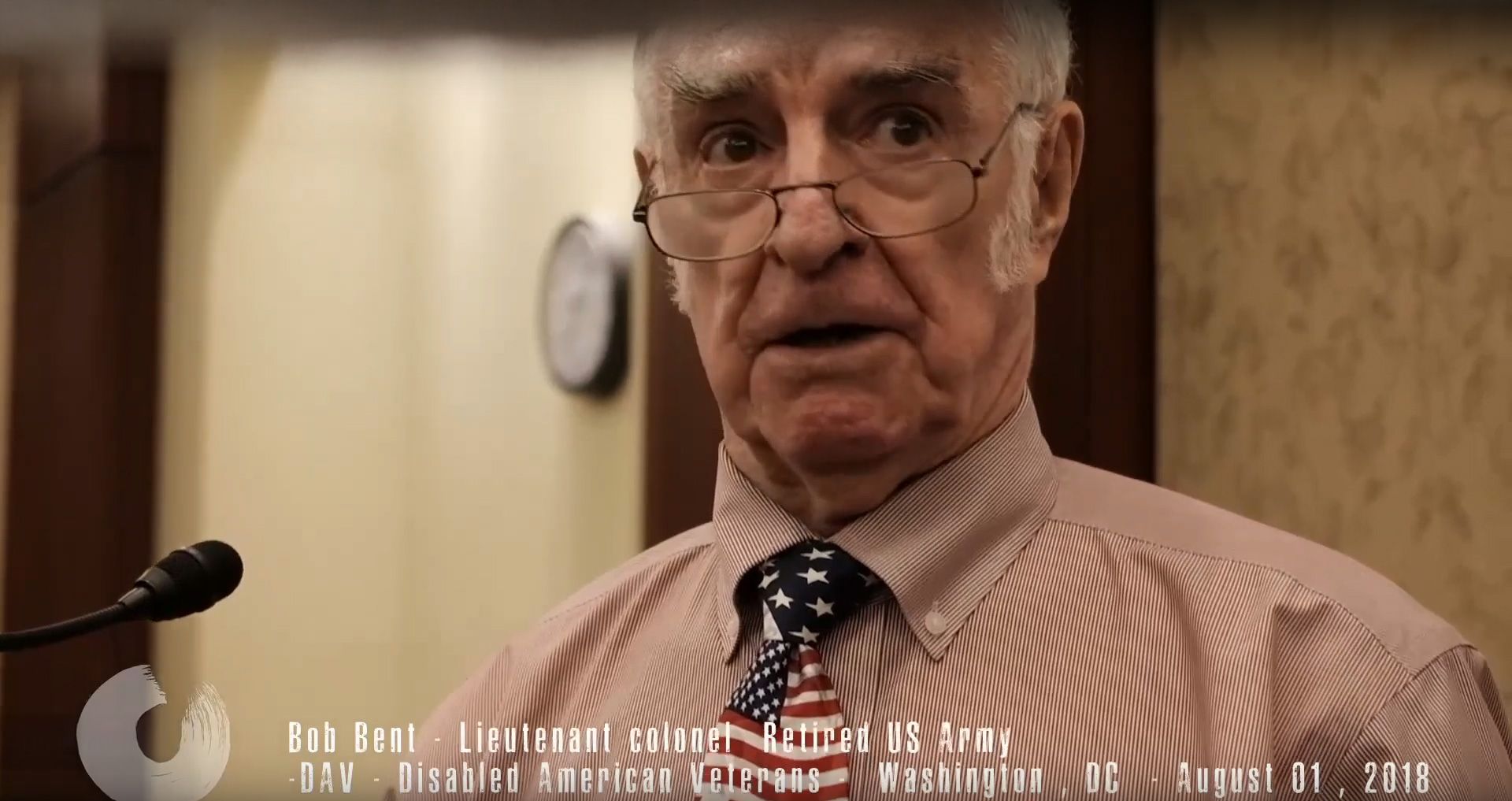Publisher's Corner
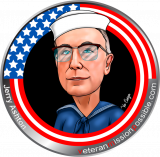
Guest Viewpoint
The American Foundation for Suicide Prevention and Zero Suicide - Meet the Staten Island Military, Veteran, Family (SMVF) Task Force!
I Tried to Die on Memorial Day
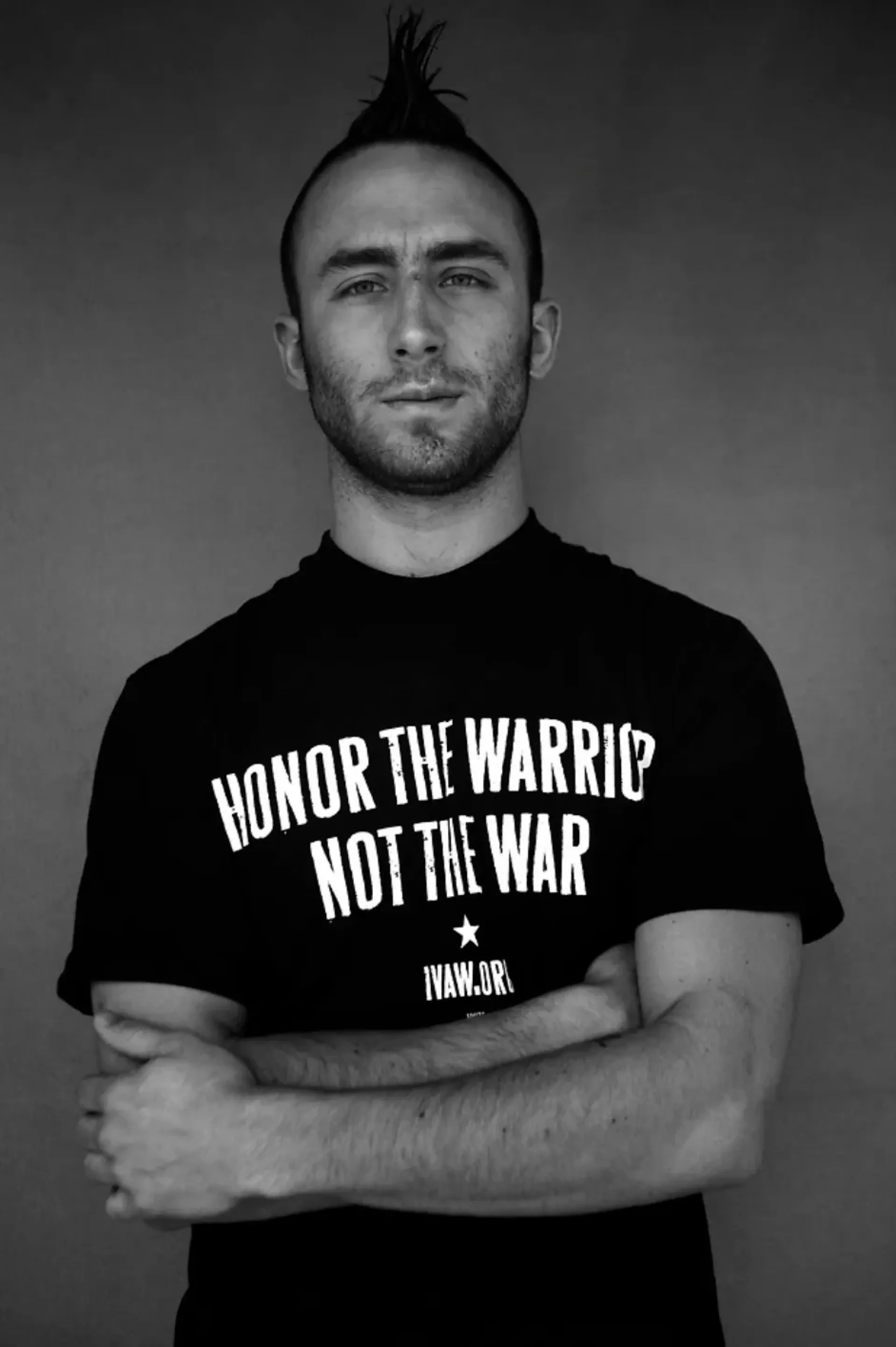
Now I fight for my daughter, my fellow veterans, and the future of this country.
Author’s Note:
This is a personal and deeply honest reflection that includes descriptions of trauma, mental health struggles, and a suicide attempt. If you’re in crisis, you are not alone, and there is help available. In the U.S., you can call or text the Suicide & Crisis Lifeline at 988 any time, day or night.
If you need to step away from this piece or return to it later, that’s okay. Your well-being comes first.
Where this story begins—and almost ended.
Memorial Day weekend, 2007. I was stationed at Fort Stewart, Georgia, a few months past my enlistment date thanks to the Army's stop-loss policy. By then I was broken in ways I didn’t yet have language for. I’d stopped hoping to go home. I’d stopped imagining a future. I felt more like a ghost than a soldier.
I made a decision that weekend. If I couldn’t leave the Army by the front door, I’d leave it another way. I planned to kill myself on Soldier’s Walk—a wide, solemn field lined with trees, each one planted in honor of a 3rd Infantry Division soldier killed in combat. I had walked that field before. I knew what it represented. I picked it on purpose.
I wanted to be mourned like them. To be seen like them. To die with purpose. To be remembered.
I had surgery a few weeks earlier—sinus and ear issues that never resolved after my deployment to Iraq. I saved the painkillers. I mapped out the time of night when no one would be around. I thought about the note. About my mother. About not wanting to leave her a mess—just a story she could tell herself about her son, the soldier who didn’t make it.
That’s what Memorial Day was to me. Not a long weekend. Not a BBQ. Not just a day to remember others. It was the day I hoped to disappear into.
But I didn’t die.
The Army kicked me out instead.
I came home to Long Island with nothing but boxes and a head full of noise. I moved back into the green-carpeted bedroom I’d left behind at 18. I unpacked my queen-sized bed into a room built for a boy. And I tried to figure out what to do with a life I didn’t ask to keep.
This year, 18 Memorial Days later, my wife and I are preparing for the birth of our daughter. She will arrive any day now.
Memorial Day still pulls me backward—to Soldier’s Walk. To the ghosts I carry. But now, it pulls me forward, too. Toward her.
Toward the fight to make this country worthy ofher.
Toward June 6, when I’ll stand alongside other veterans and demand that we stop erasing our own.
Because to fight for veterans is to fight for America. And to fight for America is to fight for my daughter.
Then: A Broken Homecoming
I came home in the late summer of 2007, discharged from the Army and untethered from everything I thought I’d built my life around. Fort Stewart, Iraq, the mission, the uniform—all of it disappeared at once. One day I was a sergeant built for a war zone; the next, I was a 22-year-old with no job, no plan, and no idea how to exist in the civilian world.
I moved back into my childhood bedroom on Long Island, in New York. That room hadn’t changed since I left for basic training. The carpet was a dark hunter green I picked out in elementary school. The walls of our first floor were still unfinished—no drywall, just exposed insulation and two-by-fours from a renovation that had started in the ‘90s and never ended. We’d added a second floor when I was in fourth grade, building a full-size box on top of the tiny ranch we used to live in. From the outside, the house looked like someone had stacked one home on top of another.
There was barely enough room for the queen-sized bed I’d shipped up from Georgia. The bedframe nearly blocked the door even when it was shoved into the corner.
Most of my things stayed in boxes, stacked away in a rental shipping container in the back yard. It was like trying to compress a collapsed life into a ten-by-ten cell.
The house was full. My twin siblings were still living there. So was my brother’s girlfriend, who’d basically moved in while I was gone. And I didn’t come alone—I brought two rescued pit bulls with me, both nearly 70 pounds. I’d imagined starting college with them in a nice off-campus apartment, a fresh start with loyal companions. But I wasn’t going to college. I was going nowhere.
The dogs were constant sources of conflict. I could barely care for myself, so my family had to stay on top of me to take care of them. They tethered me to the house and made it even harder for me to find a way out. No landlord wanted to rent to a broke 22-year-old with two pit bulls. So I was stuck—again.
Soon my dad would be dying a slow and painful death. A failed liver transplant left him bedridden and slowly fading. My mom was working full-time and trying to keep the house from falling apart. Neither of them had the capacity to understand what was happening to me. And I didn’t have the words to tell them.
I drank every day. Not socially. Not to relax. I drank to disappear. To sleep through the day. To numb the nights. To forget what I couldn’t make sense of: why I had survived when so many hadn’t. Why I came home without honor. Why the Army had turned on me after I tried to die.
My mom started finding me passed out in the bathroom. Sometimes it was the hallway. Once it was soaking in a bathtub, which I had vomited in after drinking too many Long Island Iced Teas.
By October, just a few months after I got home, she’d had enough. She gave me an ultimatum: go to the VA and get help, or get out. That was the moment I realized I wasn’t just depressed. I was dangerous to myself. And no one—not even the people who loved me—could afford to let that danger continue unchecked.
This was the start of my second life. But I didn’t know that yet. All I knew was that everything I’d once believed about service, brotherhood, and coming home was a lie I’d been sold. And now I had to find a way to live with it.
The Suicide Attempt
The planning started small. At first, I told myself I just wanted a break. I’d just had sinus surgery to excavate the damage from the constant infections I’d carried home from Iraq—the burn pits, the dust, the poison we all breathed without question. They’d scraped and carved and burned tissue out of my head, rebuilt the plumbing in my sinuses. The pain meds they gave me were supposed to help me recover. Instead, I forced myself to exist with the pain and hoarded them.
By early May 2007, I was on convalescent leave from Fort Stewart, still on active duty in the Army but already mentally gone. I was staying off-base at a buddy’s place—Steve, another Forward Observer and one of my best friends from basic training. He and his wife worked during the day, so I spent most of my time alone, drinking to numb myself, slipping deeper into a darkness I couldn’t name.
That’s when I saw Ron Paul in the Republican primary debates.
He was the only one on stage talking about Iraq. Everyone else seemed obsessed with the border. It felt like no one gave a shit that we were still at war. But here was this guy—this Republican—saying the war was wrong. Saying we shouldn’t be in Iraq. I had been a Republican since I could register to vote, but I didn’t know anything about libertarianism. I just heard someone acknowledging the reality I’d lived. And that was enough.
I dove headfirst into Ron Paul forums, YouTube clips, and a whole rabbit hole of "truth." I started reading the books on his recommended reading list. Confessions of an Economic Hitman hit me like a truck. Suddenly I believed that everything I’d been through was part of a global scam. The war wasn’t for democracy. It wasn’t for safety. It was for oil. For profit. For private military contractors building permanent bases so that corporations could control the Middle East.
I started reading about the Federal Reserve. I discovered the documentary Zeitgeist. And that was it.
Zeitgeist told me religion was a tool to control the masses, that the Fed was a private cabal, that shadowy elites orchestrated war to enrich themselves. I didn’t yet know how much of it was laced with antisemitic dog whistles. All I knew was that it gave shape to the fury inside me. I felt like I was part of a generation of dupes—sent overseas by corrupt elites to kill and die for nothing. And I was one of the ones who got spat out.
That documentary became my Bible. I watched it obsessively. I burned hundreds of DVDs and dropped them in mailboxes around Long Island after I got home. I wanted to wake people up.
But before any of that, I wanted to disappear.
I had a deeply fixated idea: that I could die without traumatizing my mom. I didn’t want an open-casket disaster. I didn’t want her to have to look at what was left of me if I put my Springfield 1911 in my mouth. So I researched ways to die that would leave the least mess. I considered crashing my car under a bridge with the cabin full of gasoline. But ultimately, I chose the painkillers. I thought it would be clean. Quiet.
And I chose the location just as deliberately.
Soldier’s Walk is a field at Fort Stewart where they plant a tree for every 3rd Infantry Division soldier who dies in combat. It’s a living memorial. A forest of ghosts. I walked onto that field and sat beneath those trees because I wanted to join them. Because I thought that’s where I belonged.
I had been stop-lossed. My contract was up, but the Army kept me anyway. I wasn’t free. I wasn’t dead. I wasn’t a civilian. I was nothing. The suicide attempt was my way out. The only one I thought I had.
I don’t remember the exact moment it all unraveled. I just know that I didn’t die. The Army first threatened to prosecute me, then just kicked me out. “General discharge under honorable conditions.” Just honorable enough to be meaningless.
They didn’t bury me. But they erased me all the same.
And so I went home—not as a hero. Not as a warrior. But as a ghost with a pulse.
Aftermath: Stuck, Angry, Alive
I didn’t die on Soldier’s Walk, but I didn’t really come home either. What I brought back to Long Island wasn’t a version of myself anyone recognized—not even me.
I told myself I was done with the Army. That I could just start over. But I couldn’t sleep. Couldn’t hold a conversation. Couldn’t be around people unless I was drunk. Crowds made my skin crawl. Even walking into a mall or riding the subway sent me into a cold sweat. I didn’t have the words for it then, but I know now it was PTSD. What I called back then was: fuck this. Fuck everything.
I started spending my days in YouTube rabbit holes. I’d wake up at noon, wander into the smelling like last night’s drinks, eat something microwaveable, and sit down at the computer until 3 or 4 in the morning. Video after video. Clip after clip. Debates, conspiracy docs, forums full of people who hated the government as much as I did.
Zeitgeist became my gospel. If I’d had more money and a better printer, I would’ve been handing out manifestos. Instead, I bought two DVD burners and cranked out hundreds of copies of the documentary. I filled my backpack and walked around my Long Island town dropping them in mailboxes. Sometimes I took the train to neighboring towns just to spread it wider.
I wanted people to see what I saw—that the whole system was corrupt, rigged, designed to break people like me.
I didn’t talk about trauma. I talked about the Federal Reserve. I didn’t say I was haunted. I said we were all slaves to shadowy elites. The conspiracy theories gave me something simple: an enemy. A reason why my life had collapsed. A framework to explain why the Army turned its back on me, why I lost my GI Bill, why no one gave a shit about the war anymore. It felt like I had cracked the code.
But I wasn’t building anything. I wasn’t organizing. I wasn’t healing. I was spiraling.
The guys I’d grown up with were thriving. They had college degrees, Wall Street jobs, apartments in Manhattan. I had nothing. I’d sold my beloved ’77 Chevy Nova before what I thought would be my second deployment. All I had left was a beat-up Hyundai Elantra and the bitterness of someone who’d been left behind by a country he once swore to protect.
I delivered pizzas once a week for my little sister, who managed a local pizza joint. That was the only job I could handle. It gave me just enough money to buy booze. I couldn’t pass a background check. Couldn’t sit through a job interview. I was unemployable, and I knew it. The Great Recession kicked off and only made things worse.
Some nights I got into fights at bars. Most nights I drank until I blacked out. Every morning I woke up surprised to still be breathing.
I told my mom the suicide attempt was a trick. That it wasn’t real. That I just wanted out of the Army. But it didn’t take long before she saw through it. She saw the drinking, the self-destruction. She saw her son sinking.
She gave me a choice: go to the VA, or leave.
And that, finally, got me to move.
I didn’t know it yet, but that moment—her ultimatum—was the first step in a long climb out of the hole. Not a recovery. Not a redemption arc. Just movement. Just the first inch.
Because for all the anger and grief and guilt I carried, I was still alive. And that meant I still had time to figure out what to do with the fire burning inside me.
Recovery and Rebuilding
When I finally showed up at the VA, I didn’t have hope. I had an ultimatum. Get help or give up. Because me being stuck in-between was too painful for everyone.
On that first visit, what I got wasn’t therapy. It was paperwork. A C&P exam—Compensation and Pension. I sat down with a psychiatrist I’d never met who was there not to treat me, but to evaluate me. To decide whether the Army’s damage came with a price tag. I didn’t know what PTSD was. I didn’t know what the acronym C&P even stood for. All I knew was that I couldn’t sleep, couldn’t focus, and couldn’t imagine a future that wasn’t some form of drinking myself to death.
The VA didn’t fix me right away. But that visit kept me off the street. It started the process of a disability claim. And that bought me time. Enough time to start figuring out what survival could look like.
The anger didn’t go away. But I started meeting people who knew how to do something with it. Veterans like me who were disillusioned, pissed off, and trying to build something anyway. I got involved with Iraq Veterans Against the War. I went to Winter Soldier. There, I listened to other post-9/11 vets testify about their own disillusionment, their pain, their guilt. For the first time, I felt like I wasn’t alone.
After a long and dark five years, the lessons I was learning through therapy at the VA created enough stability that I could at long last take my first step forward.
I started community college not because I believed I could succeed, but because I didn’t know what else to do. And then, in my first semester, I signed up for Economics 101.
That class changed my life.
For years I’d been caught in conspiracies. I believed the world was controlled by shadowy elites, that nothing could be fixed, that everything was rigged. But in that classroom, I learned about incentives. About supply and demand. About the sunk cost fallacy—the idea that just because you’ve invested time or energy or money into something doesn’t mean you’re obligated to stick with it.
That idea wrecked me. And then it freed me.
I realized I didn’t have to stay loyal to the person I’d been. I didn’t have to be defined by my discharge or my darkest moment. I didn’t have to keep dragging myself through shame just because I’d carried it this far.
I started to see that my trauma wasn’t just a psychological weight—it shaped how I handled relationships, how I thought about jobs, how I made decisions. And understanding that gave me a bit more control. Just enough to start rebuilding.
I got more involved in advocacy. I met Chuck—an experienced Hill staffer and legislative counsel who had worked for Senator Carl Levin. He taught me how to move from rage to strategy. How to identify a problem, yes, but also how to propose a solution. How to write policy. How to talk to lawmakers.
I took my own experience with a general discharge and turned it into a campaign to help others. Eventually, I helped pass federal legislation to help veterans worse off than me, with “Other-Than-Honorable” discharges, who had been denied the same VA care that had saved my life. I found ways to convert my story into something that could help people—other vets like me, who had been discarded, disillusioned, dishonorably pushed aside.
I didn’t get better all at once. I didn’t “recover” in the clean, inspirational sense. But I stopped spinning. I stopped falling. I started building a life I could live inside.
One where survival wasn’t the end goal. It was just the beginning.
What Memorial Day Meant Back Then
Before I started healing, Memorial Day was a cruel joke.
It was a day full of flags and platitudes. Sales and parades. American exceptionalism in red, white, and blue. I didn’t want to go to barbecues and think of the lives my dead friends should have lived while everyone else around me celebrated the unofficial start of the summer season. I’d sit with a stiff drink in my hand and ghosts in my chest.
It was a day for the good soldiers. The ones who died clean deaths in uniform. The ones who came home in coffins and got eulogies. The ones who never had to deal with the Army turning its back on them.
I didn’t think I had the right to mourn what I had lost. I didn’t believe I counted. Not with a general discharge. Not with a suicide attempt under my belt. I thought Memorial Day belonged to someone else—someone better.
But I couldn’t stop thinking about the guys we lost. The ones I served with. The ones I thought were unbreakable. I’d scroll through back issues of the Army Times, looking at the faces of the dead, trying to match my nightmares to real names. I couldn’t trust my own memory anymore. I couldn’t separate what had happened from what I feared had happened: who had died in Iraq? Who died at home? Who just died in a dream? My brain made them all bleed together.
Somewhere in the middle of that confusion was the medic I’d seen bleeding out on a gurney on Forward Operating Base (FOB) Hope in Sadr City, Baghdad. We weren’t close. I didn’t even know who it was at first, splayed out with his uniform torn apart and covered in blood. But I watched the Blackhawk come in. I saw the medics running. I saw the panic. And I watched my own platoon’s medic break down in rage and grief.
Those images stayed with me. They didn’t need to be my best friends to haunt me. They were soldiers. They were my brothers.
And then there were the names I knew better. The ones who died by suicide. The ones who OD’d. The ones who made it home in body but didn’t stay long. No one planted trees for them. No one folded flags. No generals gave speeches in their honor.
I thought about those guys every Memorial Day. I drank for them. I drank because of them. I drank because I didn’t know what else to do.
Memorial Day wasn’t sacred. It was suffocating. A day that demanded silence, gratitude, and a kind of patriotism I no longer believed in.
I didn’t see a place for someone like me in the American story it celebrated.
So I wrote my own story in the margins. In the bottle. In the rage. In the shame.
I didn’t know then that I would someday reclaim it.
What Memorial Day Means Now
Now, Memorial Day still hurts. But the hurt has shape. It has meaning. It has direction.
It’s no longer just a day for the dead. It’s a day for the nearly dead. The forgotten. The erased. The ones who didn’t get statues or speeches. The ones who died waiting for care. The ones who made it home only to fall apart. The ones who, like me, lived when they didn’t want to—and had to figure out what to do with that unwanted life.
It’s a day for those who stayed. For those who fought their way back. For those who rebuilt. For those still fighting now.
And this year, Memorial Day is for my daughter.
She hasn’t been born yet, but she’s about to be the reason I do everything. Every time I open my mouth to speak publicly—whether in front of Congress, at a rally, or online—I’ll be thinking about what kind of world I’m handing to her. She’s not here yet, but she already holds me accountable.
Memorial Day isn’t abstract anymore. It’s not just about the past. It’s about the future I’m building in the names of those we lost—and in the name of the one I’m about to meet.
When I think about the Constitution now, I don’t just think about the oath I swore. I think about what it will mean if that oath is meaningless by the time my daughter can read. I think about how close we are to losing it all. How quickly history can change direction when no one fights to keep it on track.
Memorial Day used to remind me of everything I’d lost. Now it reminds me what I still stand to lose.
It’s not about loyalty to institutions. It’s about love. Love for those we’ve buried. Love for those we failed. Love for those still here.
I don’t need to be told to remember. I carry the dead with me every day. But I do need people to understand what memory demands. Not silence. Not platitudes. Action.
So I take action. I fight for veterans. I fight for democracy. I fight because the country I want my daughter to grow up in doesn’t exist yet. And it won’t unless people like us build it.
Memorial Day is no longer the end of something. It’s the beginning.
It’s the call to keep going. To keep building. To keep fighting. For the living. For the dead. For the ones yet to come.
June 6: Unite for Veterans
On June 6, I’ll be in Washington, D.C., standing shoulder to shoulder with veterans from every era of service. We’re not gathering for a parade or a ceremony. We’re rallying for our lives.
The threats we face today aren’t coming from overseas. They’re coming from inside our own government—from political leaders dismantling the very institutions meant to care for us.
They’re gutting the Department of Veterans Affairs. Forcing out doctors and nurses. Closing clinics. Slashing benefits. And they’re doing it while wrapping themselves in the flag and pretending they speak for people like us.
They’re targeting veterans and military family members in the federal workforce—firing us, silencing us, treating our service as disposable.
They’re replacing care with profit. Replacing accountability with ideology. Replacing truth with propaganda.
This is not a partisan fight. It’s a moral one. And it’s personal.
Because when you attack veterans, you attack our families. You attack the stability we fought to build. You attack the idea that anyone who serves this country deserves dignity, care, and respect after they come home.
So we’re drawing a line.
On June 6, the Unite for Veterans coalition is demanding three things:
-
Protect veterans and military families in the federal workforce.
-
End the dismantling and privatization of the VA.
-
Hold political leaders accountable for policies that harm us.
This isn’t just about the VA. It’s about who we are as a country. Whether we keep our promises. Whether we value service. Whether we still believe in a government that serves the people.
We’re not just showing up for a day. We’re building a movement.
We’re already planning for what comes next. Because we know this fight won’t end on the National Mall. We’ll be organizing in towns and cities across the country. We’ll be testifying. Marching. Voting. Making sure this government is loyal to its people.
I’ll be there not just as a veteran, but as a father.
Because to fight for veterans is to fight for America.
And to fight for America is to fight for my daughter.
Closing Reflections
I didn’t survive because I wanted to. I survived because I got lucky, and my buddy Steve understood the warning signs and called for help at just the right time.
That’s the truth I carry with me every day. I didn’t earn this second chance. I clawed my way through it. And I still carry the weight of the first version of myself—the one who believed that Memorial Day was his deadline. The one who sat under the trees on Soldier’s Walk and said goodbye.
But I lived.
And I’ve spent the years since trying to make that mean something.
I’ve told my story so many times it sometimes feels like it belongs to someone else. But it’s still mine. And it still hurts. Not because I’m ashamed of where I’ve been—but because I know how many never got the chance to crawl out. How many fell into the same spiral and never came back.
So I speak. I organize. I build. I rage. I fight. I survive.
Not as a tribute to who I was, but in honor of those who never made it home. In honor of those who did, and were left to fend for themselves. In honor of the kid I used to be—the one who thought service would give him purpose, and instead found himself erased.
And now I fight for someone else too. A little girl who hasn’t yet taken her first breath.
She’s not a symbol. She’s not a political prop. She’s a real, tiny human. And she’s the reason I wake up every day determined to keep going. To make the world less cruel. To make this country more honest.
The promises we make to our troops mean nothing if they disappear the moment we hang up the uniform. And the Constitution means nothing if we let strongmen tear it apart while waving the very flag we swore to defend.
This Memorial Day, I don’t need a reminder to remember. I remember everything. But I do need people to act.
Because the only way to honor the dead is to fight like hell for the living.
And I’m not done fighting.
Not for democracy. Not for justice. Not for my daughter.
Please join us on June 6 at the National Mall for the Unite for Veterans Rally.
